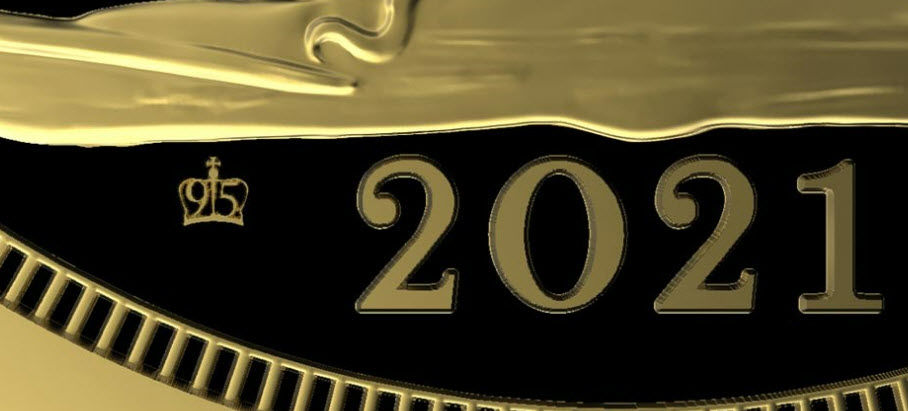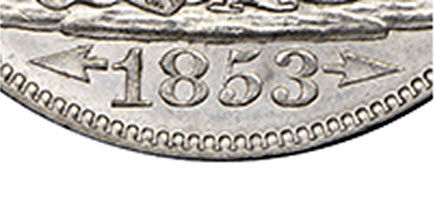Privy Marks on Coins – What Is a Privy Mark?
Posted on July 29, 2022
By Paul Vanguard, for BullionMax.com
A privy mark, often confused with a mint mark, is a special symbol used by modern mints to commemorate events or communicate other information about the coin’s origin.
First, let’s clarify the difference between privy marks and mint marks:
Mint mark: A mint mark is intended to
identify the specific location where a coin is minted.
Used for nearly 2,000 years to distinguish the mint that made a particular coin. In the year 250, the
Roman empire began using mintmarks to identify the origins of specific coins (to hold mint officials accountable for non-standard or debased coinage).
Today, most nations worldwide have adopted a alphabetical character to represent the specific mint responsible for a coin’s issue. The U.S. Mint uses the following mint marks:
- D - Denver Mint branch
- P - Philadelphia, the U.S. Mint’s largest facility (the mint has had a Philadelphia branch since 1792, back when Philadelphia was the U.S. capital!)
- S - San Francisco branch of the U.S. Mint
- W - U.S. Mint’s facility in West Point, NY
Historically, you may read about mintmarks from Dahlonega, Charlotte, New Orleans and Carson City (D, C, O and CC respectively), but these branches are no longer in operation.
Perth Mint’s widely-recognized mint mark is also the letter P, which has become a useful way of identifying Perth Mint’s coinage minted on behalf of other nations (most notably, Tuvalu).
Privy mark: The function of a privy mark can vary. Privy marks
may indicate where a coin was minted, and may also commemorate an event or indicate other special information about a coin.
One example is the U.S. Mint’s use of the V75 privy mark (commemorating the 75th anniversary of the Allied victory in World War II) for a limited mintage of 2020 proof silver eagle coins.
More examples of privy marks on coins
UK’s Royal Mint tells us a story of another privy mark with incredible history behind it:
Guineas bearing the marks ‘VIGO’ and ‘LIMA’ refer to the battle of Vigo Bay, when precious metal was captured from two Spanish and French treasure ships and was later melted down and used to strike coins.
Now
that’s a privy mark I’d love to have in my collection!
In 2021, Royal Mint added a special privy mark to sovereigns in honor of the Queen’s 95th birthday:

Similarly,
Perth Mint’s 2022 double sovereign proof coins have a “70” privy mark celebrating Her Majesty’s Platinum Jubilee, marking a reign lasting an incredible
70 years – and Queen Elizabeth II the longest-ruling monarch in English history.
Another Royal Mint privy mark, the
2014 silver Britannia with Year of the Horse privy mark, quite unusually appears
on the edge of the coin.
Privy marks on U.S. coins
The
U.S. Mint gives us one example of a way in which privy marks on coins were used to communicate vital information about the marked coins themselves:
In the 19th century, the U.S. Mint used arrows on coins to signal a change in the way coins were made. Although records don’t refer to these arrows as privy marks, the symbols did serve the same function by communicating information about production. In 1853, the Mint temporarily reduced the weight of silver coins. From 1853 to 1855, silver coins featured arrows on either side of the date to indicate the weight change. The Mint removed the arrows when the weight returned to its previous amount. The weight increased in 1873 and 1874 and again, the Mint used arrows to communicate that.
Here’s what that looked like:
 American eagle platinum coins
American eagle platinum coins bore an eagle privy mark on the reverse from 2009-2014 as a part of the
Preamble to the Constitution series.
The 2021 Morgan silver dollar mintage included coins minted in all three operating mint branches, and two special privy marks:
- “O” privy mark to recognize the former Mint in New Orleans, Louisiana
- “CC” privy mark to recognize the former Mint in Carson City, Nevada
Since these two mint branches no longer operate, they’re recognized with
privy marks rather than mint marks. Both were actually minted at the Philadelphia branch of the U.S. Mint which generally isn’t otherwise indicated (Philadelphia-minted U.S. coins just don’t have a mint mark).
Hopefully, this helps shed a little light on the difference between privy marks and mintmarks. If nothing else, remember this:
Mint marks indicate the facility of mintage (and that’s all).
Privy marks may indicate the facility of mintage – but usually symbolize a whole lot more.
One final thought:
privy marks are rare, and privy-marked coins are generally
highly desirable for collectors. Nothing’s guaranteed in this life, but it’s a safe bet to say that coins with privy marks will not only command a higher price at retail, they’ll also enjoy significant aftermarket appreciation simply based on their rarity and desirability.
Paul Vanguard is a lifelong precious metals enthusiast and a proud member of the BullionMax team.

 Similarly, Perth Mint’s 2022 double sovereign proof coins have a “70” privy mark celebrating Her Majesty’s Platinum Jubilee, marking a reign lasting an incredible 70 years – and Queen Elizabeth II the longest-ruling monarch in English history.
Another Royal Mint privy mark, the 2014 silver Britannia with Year of the Horse privy mark, quite unusually appears on the edge of the coin.
Similarly, Perth Mint’s 2022 double sovereign proof coins have a “70” privy mark celebrating Her Majesty’s Platinum Jubilee, marking a reign lasting an incredible 70 years – and Queen Elizabeth II the longest-ruling monarch in English history.
Another Royal Mint privy mark, the 2014 silver Britannia with Year of the Horse privy mark, quite unusually appears on the edge of the coin.
 American eagle platinum coins bore an eagle privy mark on the reverse from 2009-2014 as a part of the Preamble to the Constitution series.
The 2021 Morgan silver dollar mintage included coins minted in all three operating mint branches, and two special privy marks:
American eagle platinum coins bore an eagle privy mark on the reverse from 2009-2014 as a part of the Preamble to the Constitution series.
The 2021 Morgan silver dollar mintage included coins minted in all three operating mint branches, and two special privy marks: